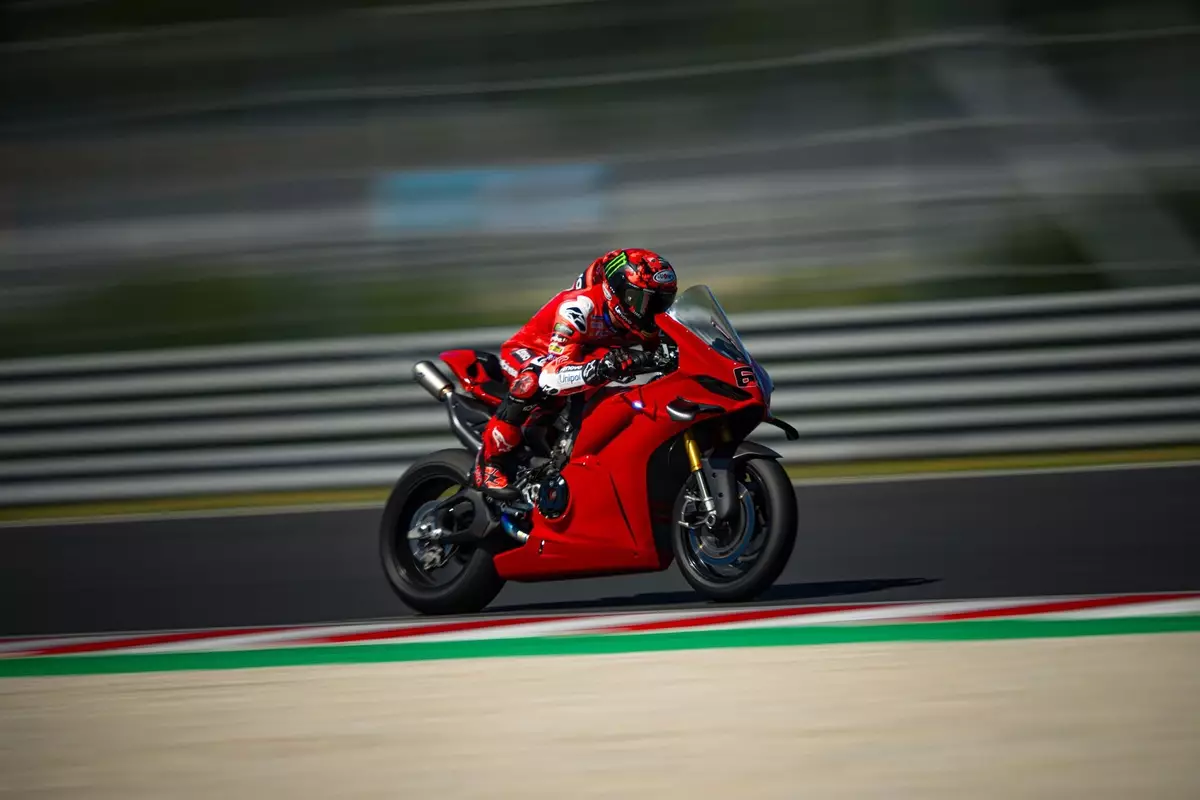In an era where MotoGP teams often rely on data and intuition, Ducati’s recent move to send seven of its top riders to Hungary for private testing at the yet-to-be-debuted Balaton Park circuit exemplifies strategic precision. This is not merely a routine track familiarization but a calculated effort to dominate a venue making its first appearance on the world championship calendar. Ducati’s decision underscores an unwavering commitment to data-driven excellence, aiming to optimize rider adaptation and technical setups ahead of the race weekend.
Rather than leaving things to chance, Ducati meticulously prepared its riders by providing them with the Ducati Panigale V4 S Pro, a machine refined for high-performance scenarios. These private tests serve to bridge the gap between professional racing and street legal super bikes, with Ducati engineers making targeted modifications—particularly in braking and suspension—to simulate race conditions within the guidelines. Such dedication to detail exemplifies a voracious appetite for victory, showing that Ducati is proactively equipping its riders to outperform competitors on unfamiliar turf.
Mastering the Unknown: The Significance of Pre-Race Preparations
The essence of Ducati’s preparation goes beyond just riding laps; it involves understanding the nuances of a new circuit that poses unique challenges. The Balaton Park circuit, characterized by tight chicanes and a stop-and-go rhythm, demands a different riding style suited to its technical complexity. Ducati’s riders—ranging from seasoned champions like Marc Marquez and Pecco Bagnaia to talented newcomers—are acutely aware of the importance of early adaptation.
This strategic pre-event testing symbolizes a shift in competitive culture—those who understand the lay of the land before the race often have a decisive advantage. Ducati’s initiative to gather approximately 70 laps across their squad demonstrates a commitment to optimizing rhythm, line, and throttle control, fostering confidence that can translate into critical seconds on race day. The focus on fine-tuning the machine and rider rapport at this stage underscores an aggressive pursuit of supremacy, willing to invest early effort for a future pay-off.
Riders’ Perspectives: Confidence Rooted in Preparation
The feedback from Ducati’s top riders reveals a mixture of excitement and strategic mindfulness. Bagnaia’s remarks about enjoying the circuit—even likening the experience to drifting—highlight a newfound familiarity and a positive emotional state heading into race week. His acknowledgment of the circuit’s constraints and unique layout underscores an articulated awareness that adapting quickly will be key to victory.
Similarly, Marc Marquez’s enthusiasm about the day on track reflects a broader philosophy—that confidence stems from thorough preparation. His comments about adjusting to the “stop-and-go” rhythm suggest an understanding that mastering the circuit’s rhythm will be decisive. For high-caliber athletes, such early familiarity enhances emotional resilience and technical mastery—elements that often separate champions from the rest.
Strategic Implications and Broader Context
Ducati’s proactive approach takes on added significance given the history and context of the Hungarian GP. Its return after a 33-year hiatus signals a major shift in the sport’s landscape, attracting more attention and anticipation. Ducati, as the top contender across riders’, teams’, and manufacturers’ championships, is clearly positioning itself to not just participate but to assert dominance.
Furthermore, this level of meticulous preparation signifies an evolution in race strategy—no longer are teams solely reactive; they are increasingly anticipatory. By shaping rider familiarity and machine optimization ahead of the event, Ducati aims to maximize its performance differential. This mindset could set a new standard for how teams approach debut circuits, emphasizing early tactical positioning to secure early advantages.
In the broader picture, Ducati’s dedication hints at a shifting competitive paradigm—one where advanced preparation, innovation, and strategic foresight are as crucial as raw speed. Their investment in circuit reconnaissance and rider readiness exemplifies a relentless pursuit of excellence that can redefine what victory looks like in modern MotoGP racing.
Cultivating Competitive Superiority
In an era where margins are razor-thin, Ducati’s tactical masterclass at Hungary epitomizes the importance of psychological and technical preparedness. The team’s decision to bring in its premier street bike and adapt it to race conditions demonstrates an understanding that race-winning setups are often born out of meticulous, needle-threading adjustments.
The upcoming Hungarian GP is more than a race; it’s a test of tactical invention. Ducati’s early efforts could give their riders a psychological edge, instilling confidence as they face unfamiliar challenges. As riders familiarized themselves with the peculiarities of Balaton Park through intense, focused sessions, they laid the groundwork for competitive dominance—making it clear that in racing, being prepared can be as decisive as outright speed.
Ultimately, Ducati’s strategy signals that in the relentless pursuit of victory, no detail is too small. From machine refinement to rider mental conditioning, every element is calibrated to forge an edge—proving that true champions don’t merely race; they engineer their triumphs with calculated cunning and unwavering dedication.


Leave a Reply